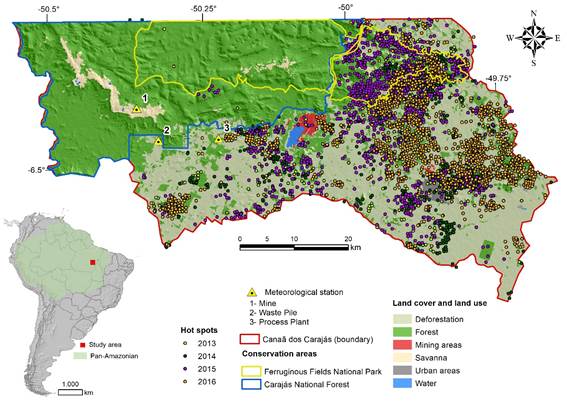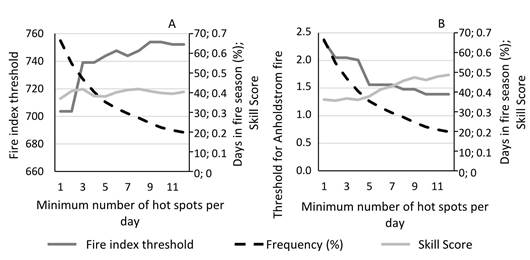ABSTRACT
The fire frequency in the Amazon increased rapidly after the 1990s due to deforestation and forest degradation, and it is expected to increase in response to climate change. We analyzed the fire occurrence and assessed seven fire hazard indices in the municipality of Canaã dos Carajás, in the eastern Amazon, for different land use and land cover (LULC) types. We used data from three weather stations located at different heights to compare the performance of the indices using skill scores and success percentages for each LULC. Overall most hotspots occurred in deforested areas and native forests, which were the main LULC types, while few were observed in rupestrian fields, urban areas, and mining areas. However, forests presented the lowest number of hotspots per unit area, especially inside protected areas, and all hotspots in forest areas were observed after a severe drought in 2015. The performance of the fire indices varied as a function of the LULC class and the weather station considered, which indicates the importance of choosing the most appropriate location of the station according to the purpose of the monitoring. The Keetch-Byram Drought Index showed the best performance for predicting fire occurrence for all LULC classes, and forests and deforested areas individually. Despite its simplicity, the Angstrom index stood out due to its good performance in the prediction of days with more than six hotspots.
KEYWORDS:
forest protection; conservation units; fire index; KBDI; Angstrom index

 Thumbnail
Thumbnail
 Thumbnail
Thumbnail
 Thumbnail
Thumbnail
 Thumbnail
Thumbnail
 Thumbnail
Thumbnail
 Thumbnail
Thumbnail





